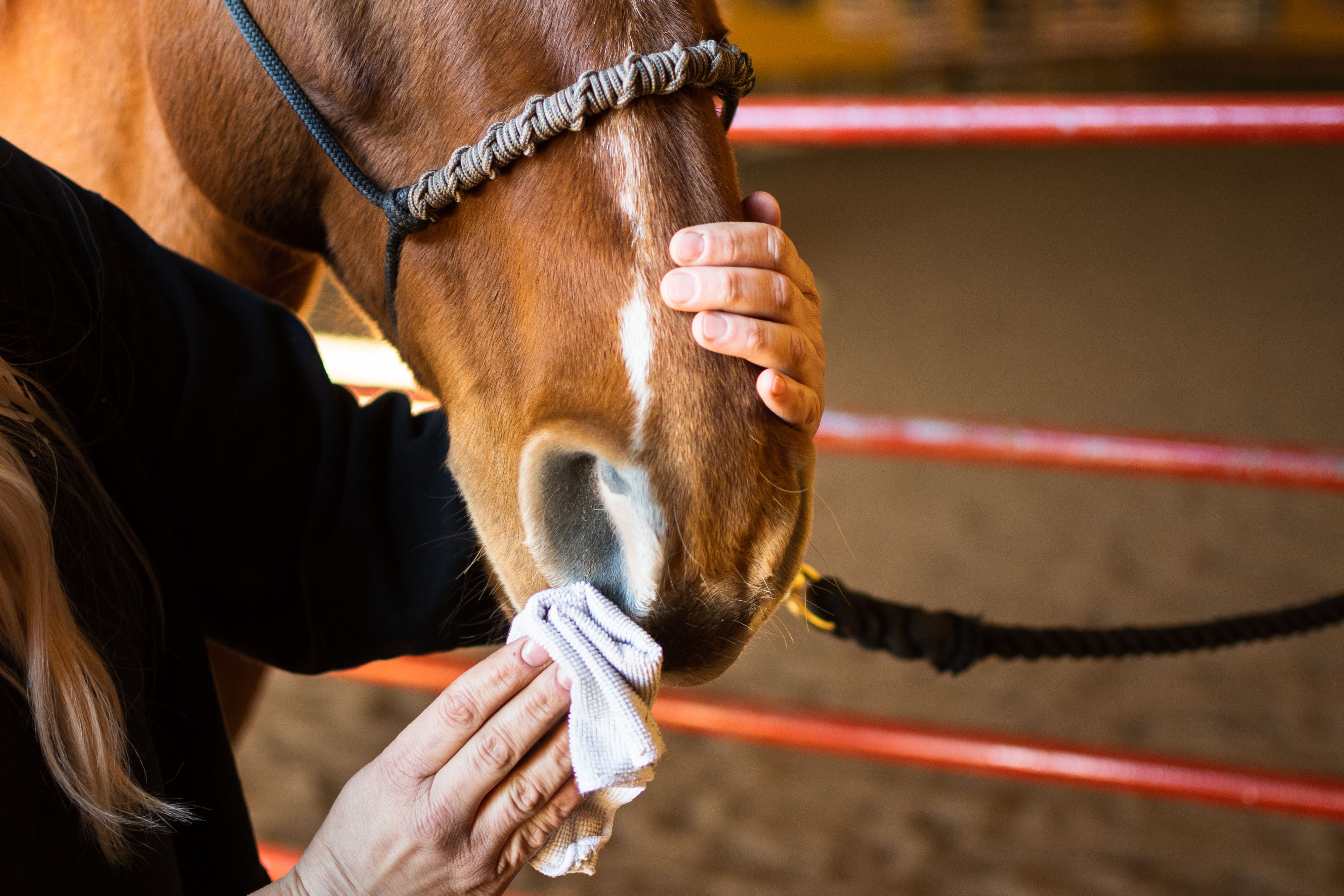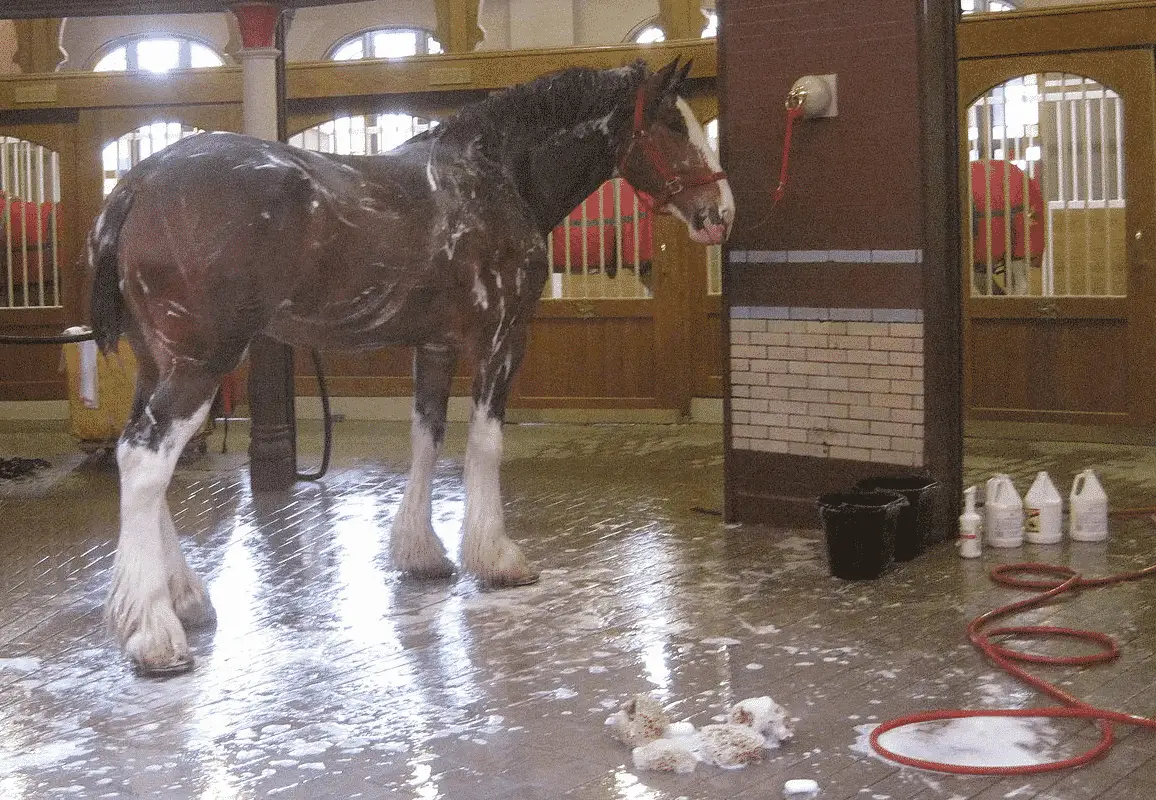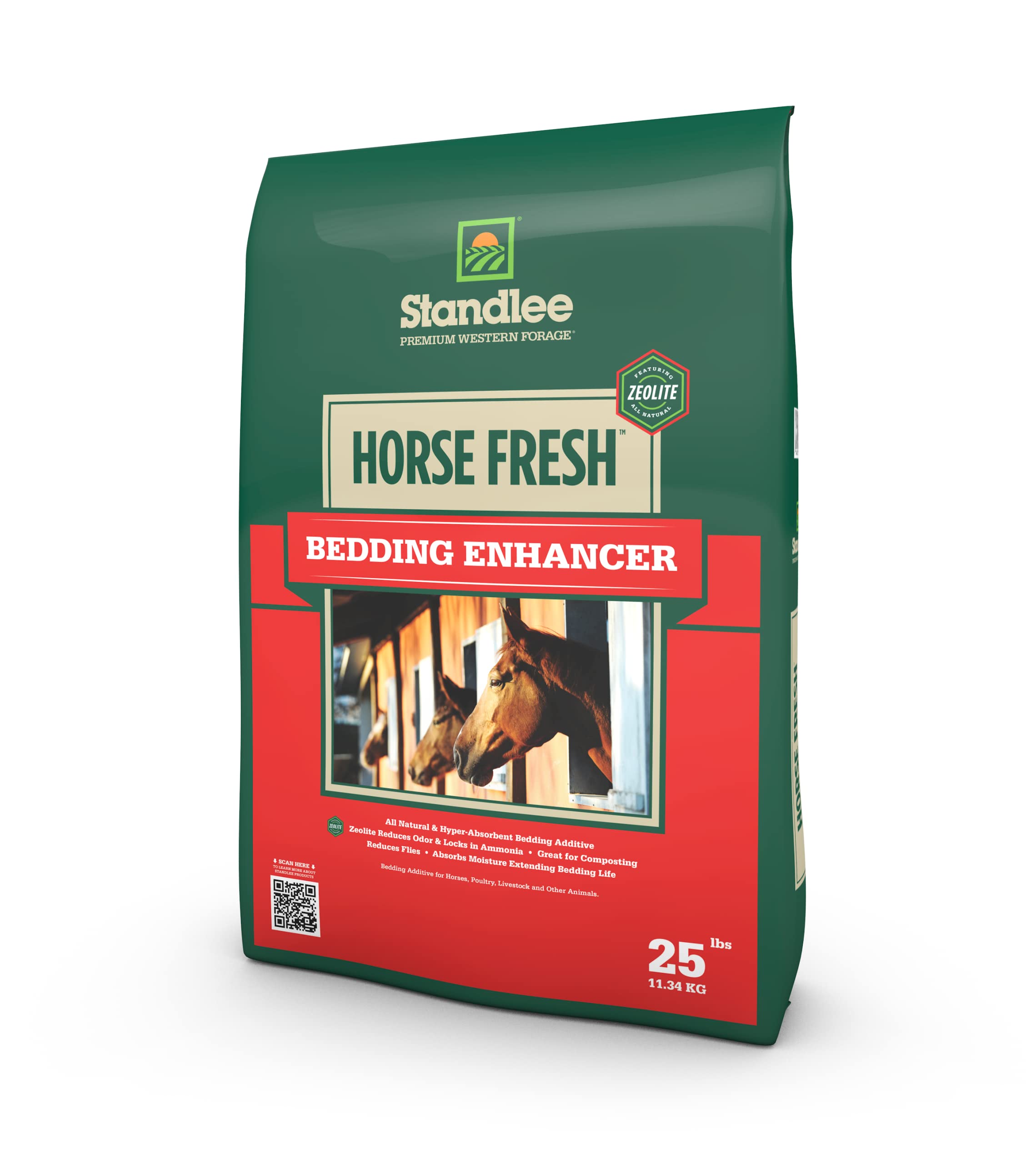Cleaning horse stalls is an essential part of equine care that ensures a healthy and comfortable environment for your horse. A clean stall minimizes the risks of disease, infection, and pests, while also promoting a stress-free living space for your equine companion. This task, while sometimes seen as mundane, is a foundation of responsible horse ownership and contributes significantly to the overall well-being of your horse.
Horse Stall Cleaning Tools

Essential Tools for Efficient Cleaning
To execute an efficient daily stall cleaning routine, having the right horse stall cleaning tools on hand is crucial. The essentials include a sturdy manure fork or shovel, a wheelbarrow or cart for transport, and a durable broom for sweeping. These items are the backbone of mucking out stalls and are indispensable for anyone tasked with stable maintenance.
Additional Tools for Deep Cleaning
For a more thorough horse stall maintenance session, additional tools may be required. These can include a pressure washer for disinfecting horse stalls, a squeegee for water removal, and specialized rakes or mats to manage bedding. Deep cleaning is a task that goes beyond daily upkeep, ensuring a pristine living space for your horse.
Steps for Daily Stall Cleaning Routine

Removing the Horse and Preparing the Stall
Before beginning the cleaning process, it is important to safely remove the horse from its stall. This not only provides you with unobstructed access but also keeps your horse away from potential irritants and stressors. Preparing the stall involves clearing out any feeders, toys, or extra equipment that might hinder the cleaning process.
Mucking Out Stalls: The Basics
The primary step in cleaning horse stalls is to remove the manure and soiled bedding. Start by using your manure fork to sift through the bedding, separating the clean from the dirty. Be meticulous, ensuring that all waste is removed, as this is a critical step in maintaining equine stall hygiene.
Assessing and Managing Horse Bedding
After mucking out, assess the condition of the remaining bedding. If it’s still dry and clean, redistribute it evenly across the stall. Horse bedding management is about being economical while not compromising on your horse’s comfort. Remove damp or heavily soiled bedding, and add fresh material as needed.
Disinfecting Horse Stalls for Equine Health
With the bedding sorted, focus on disinfecting surfaces that have come into contact with waste. A thorough scrub down with a disinfectant that is safe for horses will help to eliminate bacteria and create a sanitary environment. This step is vital for the horse’s health and should be part of your regular cleaning regimen.
Horse Bedding Management Strategies

Choosing the Right Bedding Material
Selecting appropriate bedding material is a cornerstone of horse bedding management. Options range from straw to wood shavings to specialized pellets. Each type has its benefits and drawbacks, and the right choice often depends on availability, cost, and your horse’s health needs.
Maintaining and Replacing Bedding
Regularly maintaining your horse’s bedding is as important as the initial selection. It’s essential to remove wet spots and fluff the bedding daily to ensure it remains dry and comfortable. Replacing all bedding should occur as necessary, usually every few weeks, depending on the stall usage and bedding type.
Odor Control in Horse Stalls

Preventive Measures for Odor Management
Preventing odors before they start is key to odor control in horse stalls. This involves regular removal of waste, proper ventilation, and the use of absorbent bedding materials. By staying proactive, you can maintain a fresh-smelling stall, making it a pleasant environment for both the horse and caretaker.
Natural Solutions for Odor Elimination
Nature offers several solutions for combating stall odors. Natural deodorizers like baking soda or zeolite can be sprinkled on the stall floor before laying down fresh bedding. These compounds absorb odors without exposing your horse to harsh chemicals, ensuring a non-toxic atmosphere.
Weekly Horse Stall Maintenance

Deep Cleaning Procedures
Aside from the daily stall cleaning routine, a weekly deep clean is recommended. This includes stripping the stall completely, washing walls and floors, and allowing the area to dry thoroughly. A deep clean will not only refresh the stall but also give you the opportunity to inspect for any wear that needs attention.
Inspecting for Repairs and Safety Hazards
During the deep cleaning process, take time to inspect the stall for any potential repairs or safety hazards. Look for loose boards, protruding nails, or anything that might harm your horse. Addressing these issues promptly ensures a safe and secure stall for your equine friend.
Manure Disposal and Environmental Considerations

Effective Manure Management Techniques
Manure disposal is a significant aspect of stall cleaning that needs to be handled responsibly. Effective techniques include having a designated manure pile away from water sources or arranging for regular pick-up by a local farming or composting service, thus contributing to a cleaner and more sustainable environment.
Composting and Its Benefits
Composting is an excellent method for managing manure and transforming it into valuable fertilizer. This process reduces waste, lessens environmental impact, and can provide an additional source of income if the compost is sold. Moreover, it enriches the soil and supports sustainable farming practices.
Advanced Tips for Equine Stall Hygiene

Innovative Hygiene Solutions
Staying abreast of innovative hygiene solutions can greatly assist in maintaining a clean and healthy stall. Products such as stable ionizers, which reduce airborne bacteria, or high-absorbency bedding materials, can be game-changers in equine stall hygiene and overall health.
Creating a Hygiene Schedule and Checklist
To ensure consistency, creating a hygiene schedule and checklist can be extremely beneficial. This schedule should outline daily, weekly, and monthly tasks, providing a clear framework for caretakers. A checklist ensures that no aspect of stall cleaning is overlooked and that the highest standards are upheld.
When it comes to maintaining a clean and healthy environment for your horse, knowing how to properly clean their living space is crucial. If you’re looking for guidance on how to clean horse stalls effectively, you’ve come to the right place. But that’s not all there is to horse care. You might also be interested in learning about other aspects of horse grooming and maintenance. For instance, keeping your grooming tools in top condition is important, so you might want to read our guide on how to clean horse brushes. Additionally, ensuring that your horse’s blankets are clean and comfortable is essential, especially during colder months; check out our article on how to wash horse blankets. And for those looking to address a more delicate topic, our instructions on how to clean a horse’s sheath can help you with one of the more specialized aspects of horse care. Together, these resources provide a comprehensive approach to maintaining a clean and healthy environment for your equine friend.
Conclusion: The Importance of Consistent Stall Cleaning

In conclusion, the importance of consistent cleaning horse stalls cannot be overstated. It is a fundamental aspect of horse care that contributes to the health, happiness, and longevity of your horse. By adhering to the practices outlined in this guide, you will foster an environment that is both welcoming and safe, ensuring the well-being of your equine companion for years to come.



